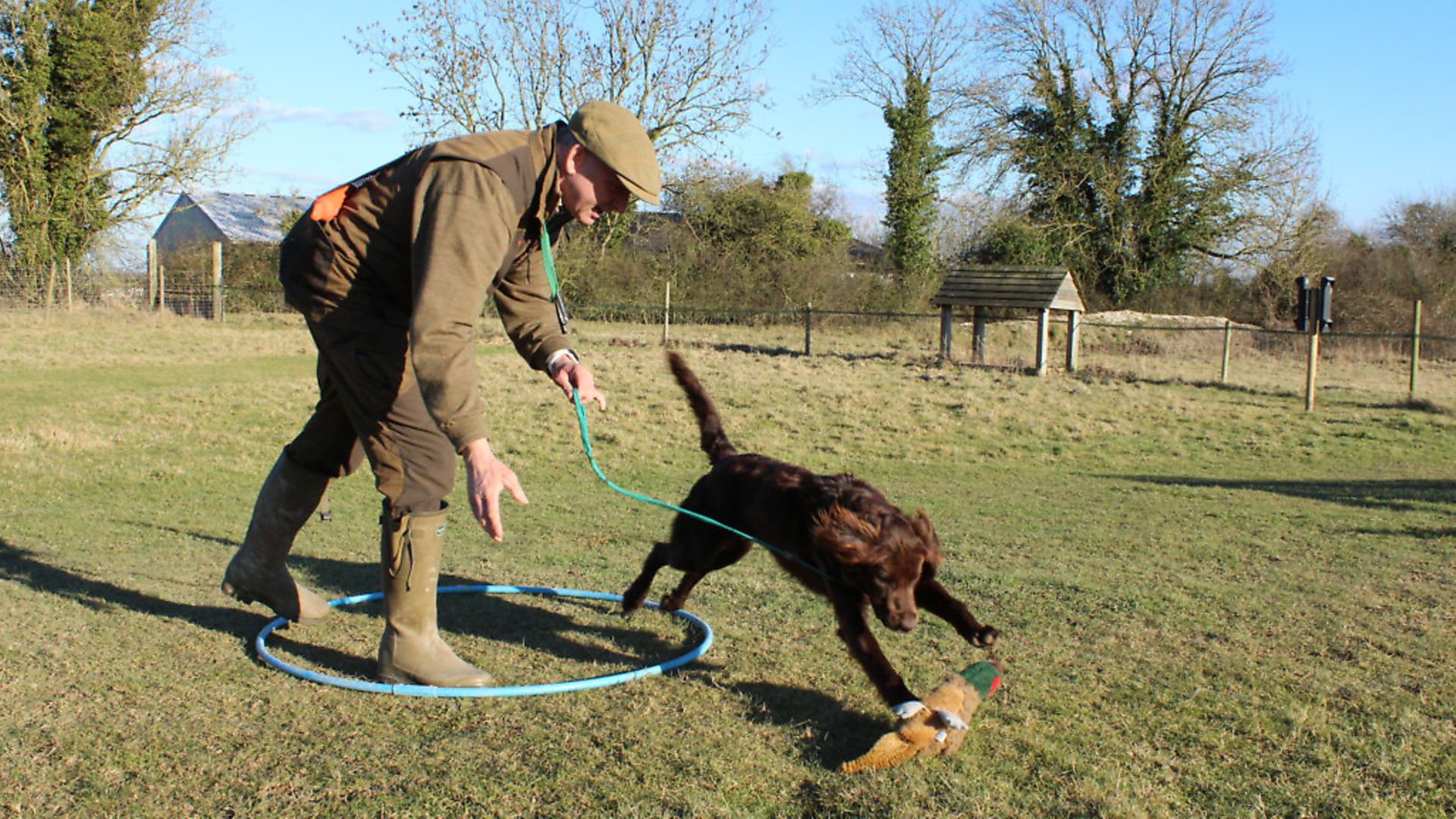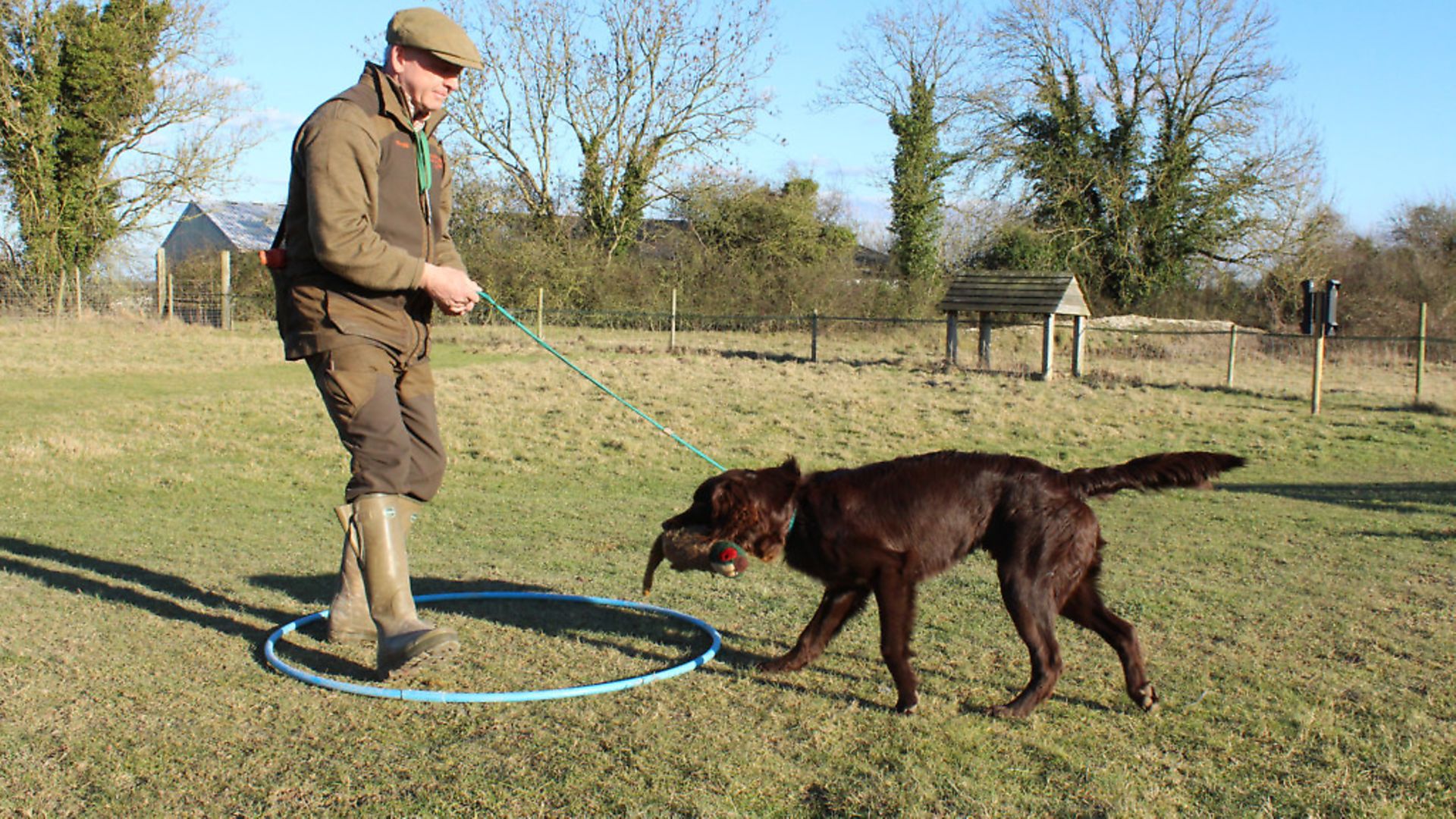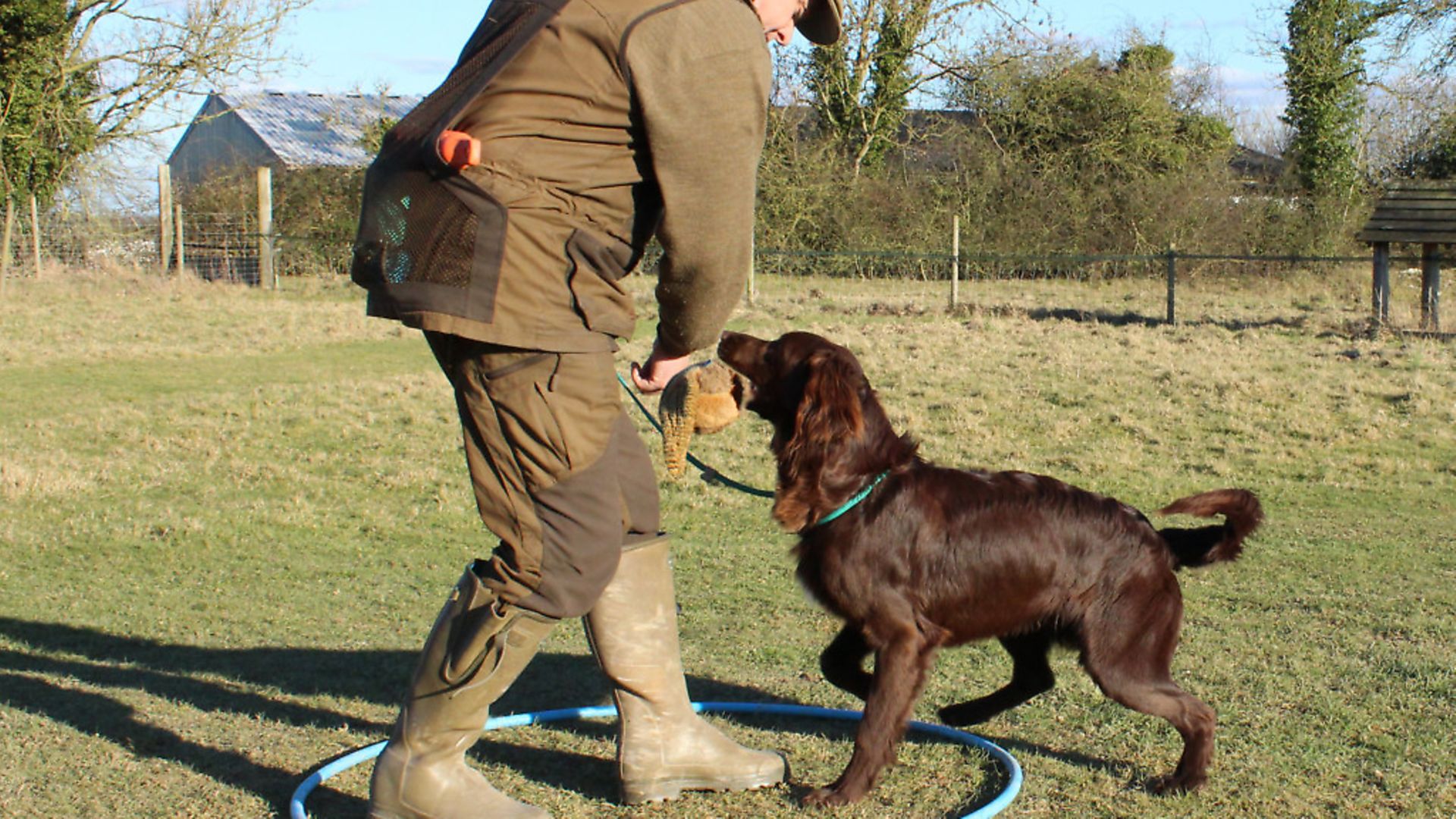Has your gundog fallen into the habit of keeping the dummy all to itself? You need to train the “give” command! Howard Kirby of Mullenscote Gundogs tells us how
 credit: Archant
credit: Archant
We are finally seeing longer hours of daylight. The extra light makes finding time for training dogs easier and, let’s face it, just a little more fun if it’s warmer and drier. In the last few issues, we’ve been talking about various aspects of teaching our gundogs to retrieve to hand. The main focus has been to capitalise on the dog’s instinct to bring things to us and reward it for doing so. This will always be the way forward and whenever we hit problems in the majority of dog training programs, going back and establishing well-grounded basic techniques will be our choice of action.
We’ve talked before about the arguments for and against what is nowadays referred to as a ‘positive-only training system’. This title serves, if nothing else, to give endless forums material for debate or in many cases licenses people to be faceless and downright disrespectful of each other. That said, just about every good animal and – in particular – gundog trainer that I know uses positive reinforcement to train dogs to a standard that is simply world class.
Without exception, these trainers will, however, have taught their dogs that failure to comply with clearly taught rules will mean what is termed ‘negative correction’. A growl, a change in tone and body language or a check from a lead can be used to communicate to the dog that you are unhappy with its behaviour. Delivered in a controlled and measured way, we teach a dog that we do not approve of a particular behaviour. Best results are achieved by immediately following up with clear and positive instructions: “don’t do that, I’d prefer you to do this instead.”
These corrections should not be excessively harsh. A good trainer can effectively deliver contrasting messages leaving the dog in no uncertain terms about behaviours that they like and those that they don’t.
 credit: Archant
credit: Archant
The problem - refusing to bring/give the dummy
So, in this article, we’re going to discuss what we might do when you’re faced with a dog that once it has the dummy in its mouth simply looks at you and says, “no, it’s mine”!
Firstly, let’s take a look at what’s going on. In short, the dog simply doesn’t want to share its prize with you. Carrying, playing with, owning this prize is way more rewarding than the alternative you’re offering. What’s missing, of course, is that Holy Grail: the perfect recall. As dog owners, it’s very easy to lose sight of where our dogs are with their recall. I often have people tell me: “Oh, his recall is really great – unless he sees a rabbit, squirrel or cyclist.” At this point, we have to be honest with ourselves and recognise that maybe our dog isn’t as reliable as he could be – and that we need to work on his recall!
 credit: Archant
credit: Archant
The remedy
The positive-only approach would be to go back to basics at this point, and go through more recall training. Use of targets, the hoop, place boards or a doormat can be used to school a better recall. We’ve looked at these techniques in previous Sporting Shooter articles, and this approach may well be the best route to take. Retrieving corridors are priceless training areas. With a 12-week-old puppy, a small 1m by 3m hallway or corridor will restrict escape routes, limit distractions and enable you to focus the dog on you. With older dogs, fenced areas, pathways and tracks can be helpful. Remember: a well-delivered target training program can reschool and condition a possessive dog to want to return to a target and therefore cure a problem.
If target training isn’t your bag, then let’s teach the dog to surrender the dummy using a good old-fashioned slip lead. Pop the lead on the dog, and ask it to sit. Gently pitch the dummy about 3m in front of you.
Call ‘fetch’, and move forward, ensuring that there is enough slack in the lead to allow the dog to reach the dummy. Be careful that you don’t allow the lead to drop underneath or between the dog’s legs.
As soon as the dummy is picked, recall and give the lead a gentle but deliberate tug. Move backwards, encouraging the dog towards you. Turn quickly on your heels and encourage the dog into heel, keep moving, quietly rewarding the dog. Gently reach down and claim the dummy. Reward. If the dog is keen, offer the dummy back to the dog allowing it to carry again.
 credit: Archant
credit: Archant
We need to continue with this exercise until you see and feel a change in the dog’s willingness to return to you. You’re looking out for the dog to lift the dummy and turn to you without the need for a tug on the lead.
Now we can let the lead go and increase the distance a little. Remember that the trailing lead will still be influencing the dog’s decision making process. As we shape the new behaviour, we start to encourage the dog to retrieve with the handler stood face on to the dog.
Move from trailing to wrapping the lead around the dog’s neck. If at any point the dog starts to show any possession, go back to keeping hold of the lead.
Always warm the dog up before sending for a retrieve. Practice lead work and recall. Use rewards, but ensure you finish the warm-up with the understanding, in no uncertain terms, that you will reward but expect obedience. Now practice retrieving, ensure you reaffirm obedience and focus between retrieves.
We are trying to balance training techniques that put enough psychological pressure on the dog to tip his desire to please in your favour. This is a very difficult tightrope to walk – if he is too far either side of the mindset we need, it’s unlikely that the dog will consistently offer the behaviour you want. Gundog training is a fascinating, progressive and incredibly rewarding pastime. Learn to enjoy it, be the very best you can. To learn the skills that you need, train with people that practice what they preach. Keeeeeep training!